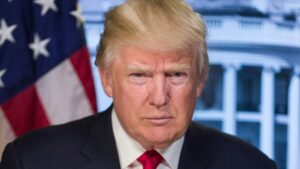US President Donald Trump announced on Thursday the imposition of a 35% tariff on goods imported from Canada starting August 1. This decision, detailed in a letter to Canadian Prime Minister Mark Carney, marks another significant move in ongoing trade negotiations.
Background of the Tariff Decision
The announcement is part of a series of more than 20 letters Trump has sent since Monday, highlighting his aggressive approach to renegotiating trade terms with various countries. The new tariff comes amid discussions over what Trump has termed “reciprocal” tariffs. He has consistently threatened to unilaterally set rates if negotiations do not yield favorable results.
“Instead of working with the United States, Canada retaliated with its own Tariffs. Starting August 1, 2025, we will charge Canada a Tariff of 35% on Canadian products sent into the United States, separate from all Sectoral Tariffs,” Trump stated in the letter, which he shared on his Truth Social platform.
Warnings of Escalation
Trump further warned that if Canada raises its tariffs on American goods, the United States will respond by increasing its existing 35% tariff by an equivalent amount.
“If for any reason you decide to raise your Tariffs, then, whatever the number you choose to raise them by, will be added onto the 35% that we charge,” he threatened.
Trade Policies Under Scrutiny
Trump criticized Canada’s trade policies, particularly its dairy tariffs, stating they can reach as high as 400%, which he claims severely restricts American farmers’ access to Canadian markets.
“The Trade Deficit is a major threat to our Economy and, indeed, our National Security,” he emphasized.
He also linked Canada’s trade practices and the flow of fentanyl across borders to issues negatively impacting the United States, including an unsustainable trade deficit.
Ongoing Tariff Negotiations
Earlier this week, Trump announced an extension of the tariff deadline for several trading partners from July 9 to August 1, providing additional time for negotiations. Simultaneously, he escalated the trade war with new tariffs on multiple countries, including allies like Japan and South Korea, and introduced a 50% tariff on copper.



